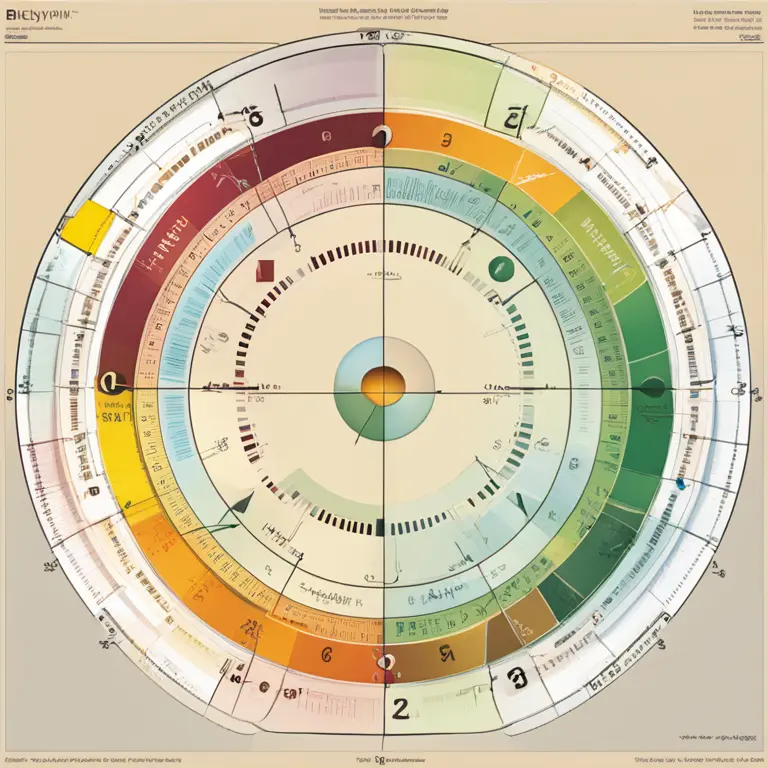
Your Guide to Biorhythm Readings
Discover the rhythms of your life with our concise guide to understanding biorhythms and their influence on your day-to-day well-being.
article by Adrian Wallace
Introduction to Biorhythms
Biorhythms are considered to be intrinsic cycles that regulate various aspects of our physical, emotional, and intellectual well-being. Originating from the Greek words "bios" (life) and "rhythmos" (regularly occurring movement or pattern), biorhythms are believed by some to forecast the changing fortunes of our lives through patterned cycles. Since the early 20th century, when Wilhelm Fliess and Hermann Swoboda purported these concepts, the study of biorhythms has intrigued seekers of personalized insights into their natural rhythms.

The Three Primary Cycles
Traditionally, biorhythms encompass three primary cycles: the physical, emotional, and intellectual cycles. Each operates over a specific time span: the physical cycle is 23 days, the emotional cycle is 28 days, mirroring the lunar month, and the intellectual cycle spans 33 days. Some modern interpretations also include a 38-day intuitive cycle. By calculating these cycles' phases, individuals can gain foresight into their optimal times for various activities, from physical exertion to critical thinking or emotional experiences.

Calculating Your Biorhythms
A biorhythm reading starts with the calculation based on one's birth date. Various tools and software available in 2024 can provide these insights quickly and include advanced features like calendaring and historical trend analysis. These tools often visually represent cycles as sinusoidal waves, illustrating high, low, and critical phases, with some services offering interpretations and personalized advice.

Critical Days and Their Importance
Critical days in biorhythm theory are junctures where a cycle transitions from high to low or vice versa, supposedly reflecting times of increased vulnerability or decision-making potential. Many advocates suggest additional caution or reflection during these periods, not as deterministic predictions but as additional data points for consideration in life's constant ebb and flow.

Real-Life Applications
Proponents argue for a range of real-life applications of biorhythm readings – from determining the best days to embark on a new fitness regime, to planning critical negotiations or performances. As always, biorhythms should be integrated with other personal and situational factors for a holistic approach to decision-making about one's activities and endeavors.
Controversy and Criticism
The scientific community largely regards biorhythms as a pseudoscience, citing a lack of empirical evidence supporting their predictiveness. Critics point to the Forer effect, where vague and general statements can be perceived as unusually accurate, as a possible explanation for biorhythm's perceived resonance with enthusiasts. Prospective users are encouraged to approach biorhythm readings with an open yet critical mind.
Embracing Your Personal Rhythms
Ultimately, whether you ascribe to the theory of biorhythms or approach them with skepticism, the concept invites us to become more attuned to our body's natural patterns and fluctuations. In a world that is increasingly fast-paced and demanding, any tool that encourages personal reflection and self-care could be seen as beneficial, regardless of the scientific validity of its claims.
Published: 1/25/2024
Modified: 1/25/2024
More predictions
Come back here soon to learn more about yourself and your future


The Basis of Biorhythms: An Insight into Biological Cycles
Delve into the concept of biorhythms, the belief in rhythmic biological processes that purportedly influence human physiology and behavior.


The Rhythms Within: Biorhythm Horoscope Insights
Tap into the cosmic wisdom of biorhythms to understand your emotional, physical, and intellectual cycles for enhanced well-being and foresight.


The Intersection of Biorhythms & Astrology Explored
Discover the link between biorhythms and astrology to gain insights into your life's patterns and potential.